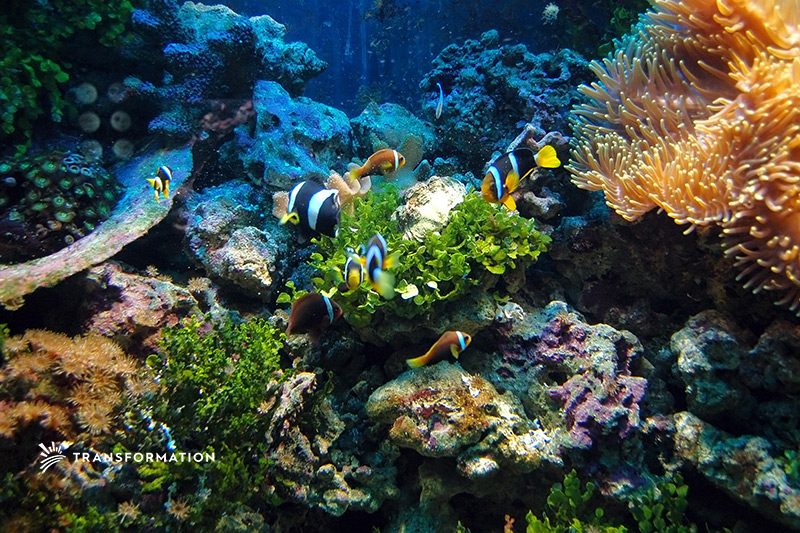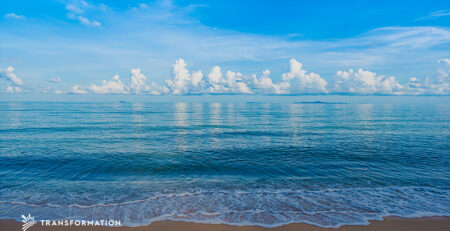Ocean Wealth: At Risk
The ocean, comprising 71% of our Earth, is a wealth of ecosystem services. The benefits of coastal and ocean ecosystems, also called blue carbon systems, break down into three categories:
- Provisioning resources: food, employment, pharmaceuticals derived from algae and minerals
- Cultural Services: tourism, recreation, aesthetic, and spiritual qualities
- Regulating services: carbon storage and sequestration, water purification, coastal protection
Each year, these services are estimated to have a value of US$2.5 trillion. The ocean’s regulating services have also mitigated the worst effects of climate change by absorbing at least 90% of the excess heat generated and taking up 23-30% of anthropogenic carbon dioxide (through photosynthesis, creation of calcium carbonate shells, and dissolution), according to Project Drawdown.
However, the ocean’s excess uptake of heat and carbon dioxide has come at the expense of ocean health. Specifically, this puts the ecosystem out of balance, leading to increased sea levels, water temperatures, acidification, declining oxygen values, decreasing biomass production, and increased die-off events. To ensure a resilient future, valuing ocean ecosystem services is crucial.
Vulnerability to Resilience
In safeguarding ocean ecosystems, there are two areas of focus:
- Protection and restoration of coastal environments, including mangroves (trees/shrubs that live in the coastal intertidal zone), salt marshes (ecosystem in the upper coastal intertidal zone, between land and open saltwater), seagrasses (flowering plants which grow in marine environments)
- Shifting to sustainable aquaculture and unlocking the potential of seaweed and kelp
Protecting and Restoring Coastal Environments
Marine vegetated habitats (seagrasses, salt-marshes, macroalgae, and mangroves) make up only 0.2% of the ocean surface, but contribute 50% of carbon sequestration in marine sediments. Furthermore, their canopies buffer wave energy and raise the seafloor, in effect safeguarding against the rising sea levels and high wave activity associated with climate change, according to a journal article published in Nature Climate Change.
The high loss rates of vegetated coastal habitats, occurring ten times faster than tropical forests, decrease coastline protection in the face of climate change and inadvertently contributes to climate change, resulting in the emission of 1 Pg CO2 annually, as a result of the loss of these “blue carbon” fixers. Blue carbon refers to the ocean carbon sink, where atmospheric carbon dioxide is converted into fixed carbon within sea plant growth and through the burial of organic matter in the seafloor.
When considering the financial burden caused by coastal ecosystem degradation, the preservation and restoration of vegetated coastal habitats are relatively inexpensive on a global scale. For example, replanting mangroves in Vietnam has helped to reduce maintenance costs by US$7.3 million a year for an investment of US$1.1 million between 1998 and 2002.
In the USA, the estimated value of coastal wetlands amounts to US$23.2 billion a year in storm protection services alone. Coastal community settlements and real estate protection depend on investment in the protection and restoration of coastal environments. Because ownership of coastal assets is distributed among many private and public actors, both individual property owners and public officials must take adaptive measures.
Sustainable Aquaculture
The increased demand for seafood represents one piece of the global food production pie, in which the persistent question of how to feed three billion new middle-class consumers by 2050 remains unanswered. To meet demands for commercial seafood, shellfish, and seaweed, the $243.5 billion (and rapidly growing) aquaculture industry has created significant environmental problems in the process.
Various environmental challenges in aquaculture include, among other impacts:
- coastal habitat destruction
- the decline of available land and fresh-water
- water pollution and eutrophication
- fish disease and parasites
- greenhouse gas emissions
Furthermore, the current aquaculture system cannot handle the stressors of climate change. If the aquaculture industry continues “business as usual,” climatic variables, including cyclone, drought, flood, warming, ocean acidification, rainfall variation, salinity, and sea-level rise, will likely undermine the future of seafood production.
One thing is clear - meeting the increasing demand for aquaculture production must minimize damage to natural systems to have a future. The full potential of sustainable aquaculture will come to fruition with a large-scale shift towards innovative production systems that operate in sync with local ecosystems and communities. The Nature Conservatory and Encourage Capital named three forms of aquaculture that have the most potential for combined financial returns and improved environmental sustainability:
- On-land finfish recirculating aquaculture systems (RAS): filtration systems operate continuously, keeping the water clean and providing a healthy environment for the fish, more stable production, less disease, and more control over hatchery growth influencers
- Offshore finfish aquaculture systems: farms are positioned in deep and less sheltered waters, with stronger currents than inshore, reduced genetic interaction of species, decreased disease, closer proximity to markets
- Bivalve shellfish and seaweed aquaculture systems: polyculture, low input requirements, low fixed costs, bivalves filter feed and purify water, provide environmental benefits to surrounding ecosystems
The Potential of Bivalve Shellfish and Seaweed Aquaculture
Bivalve shellfish and seaweed aquaculture is a regenerative ocean farming model that provides the most straightforward environmental value proposition. Not only is this considered the least environmentally damaging category of ocean farming, but there are also numerous ecosystem services, including habitat creation, increased food security, eutrophication mitigation, and as a carbon sink. In terms of food security, estimates report that increasing the growth of seaweed farming up to 14% per year would generate 500 million tons dry weight (10-30% protein composition) by 2050, adding about 10% to the world’s present supply of food, while simultaneously generating revenue and improving environmental quality.
Bivalve shellfish and seaweed farming support both blue carbon and the uptake of atmospheric nitrogen, marking these operations as a promising climate change mitigation strategy. According to the World Bank, farming seaweeds in less than 5% of U.S. waters could absorb 10 million tons of nitrogen and 135 million tons of carbon without requiring inputs. Although seaweed farming is unlikely to counteract the climate impacts of global agriculture, mitigating regional agriculture’s impacts seems likely.
For example, recent studies at the University of California, Santa Barbara found that growing seaweed in 3.8% of federal waters off the California coast could completely neutralize California’s agricultural emissions. Furthermore, the adoption of seaweed and kelp can reduce emissions from agriculture by acting as a better soil amendment than degrading synthetic fertilizer as well as an ingredient in cattle feed, which would have the effect of lowering methane emissions.
This regenerative ocean farming model expands our ability to build a new and sustainable economy on our coasts, providing food security and job opportunities. A World Bank study found that farming seaweeds and bivalve shellfish in just .1% of the world’s oceans (roughly 100 million acres) could create 50 million jobs, with the possibility of netting more than $100,000 annually on a mature 10-acre regenerative ocean farm. However, the expansion of bivalve and seaweed aquaculture is limited by the availability of suitable ocean farming areas, resilient engineering systems, and increased market demand for seaweed products.
Conclusions
Mitigating climate change will depend on both protection and innovation in our ocean spaces. To accurately value the blue carbon and adaptation services that ocean ecosystems provide, capital investment in preservation/restoration projects and sustainable aquaculture must reflect the worth of these blue carbon systems. In the area of aquaculture, shifting to sustainable models (especially bivalve and seaweed farms) will ultimately provide the food, job, and climate security we need.
Carbon offsetting-receiving credit for reducing, avoiding, or sequestering carbon- has become part of carbon emission mitigation strategies. However, this approach often excludes the growing potential of ocean-based carbon sequestration through coastal remediation and seaweed farming.
Perhaps the creation of blue carbon offsetting can be one step toward collective investment in these promising mitigation strategies. However, the broad view of restoring ocean health certainly requires transdisciplinary and cross-sector approaches that optimize the impact of investors, natural and social sciences, innovative infrastructure, governments, NGOs, as well as local and indigenous communities.




Leave a Reply